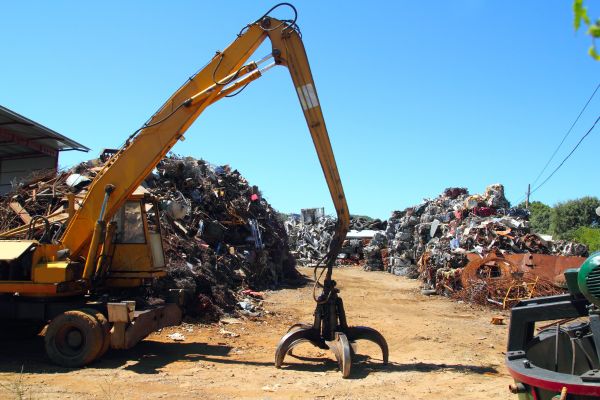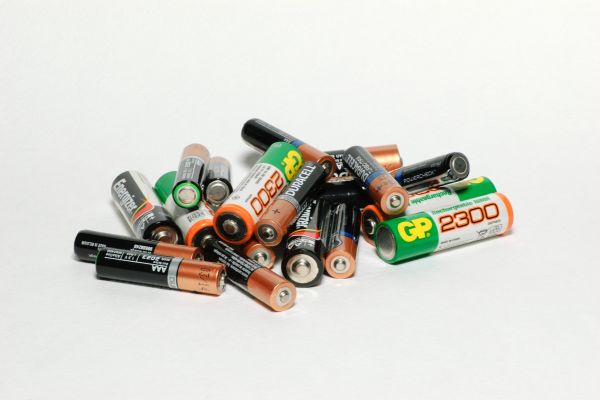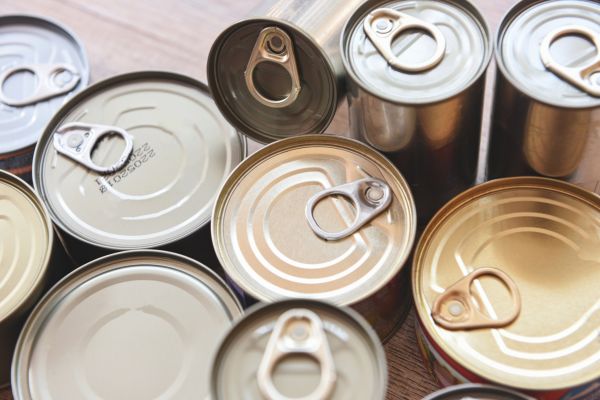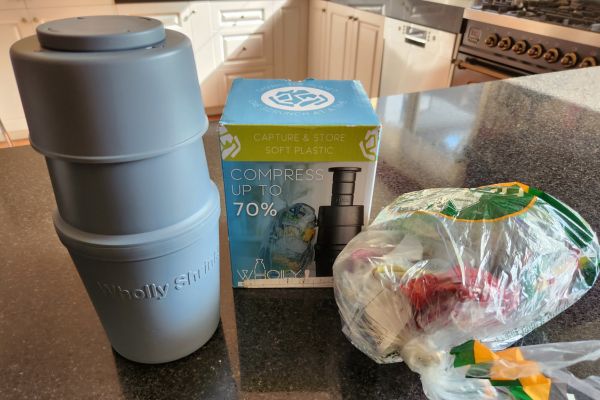RECYCLING METAL IN CURBSIDE BINS
Metals are one of the most recyclable materials that we encounter. They can be recycled endlessly without any loss of quality. In fact, the aluminum from a can that is recycled can be back on the shelf as a new aluminum can in around 60 days. That’s amazing!
Curbside recycling of metals is generally restricted to food and drink packaging. That means aluminum drink cans, steel food cans, and other aluminum, including aluminum foil or steel containers. It also means that in most locations, other metal items like toys, car and bicycle parts, pots and pans, cutlery, household appliances, and electronic goods don’t belong in your curbside recycling bin.
I’m sure I sound like a broken record, but you should check your local service as there may be some items they accept, or some may offer a separate bin to collect e-waste, for example. I am certainly aware of some curbside services that accept toys, for example.
For many of these items, there are other options for recycling them instead of putting them in your general rubbish bin. Below are some of these to keep an eye out for.
Metal scrap yard
For centuries metal scrap yards have taken unwanted metals and sold them on to buyers. It’s a well-established type of business that has been around for a long time, so it’s worth finding your nearest metal scrap yard. As with any recycling program, you will want to check their rules on what they accept. In some cases, you can even earn some money when you drop your metal off. However, don’t expect to quit your day job; it might only be enough to buy you a coffee.

E-waste or WEEE
Electronic waste, usually referred to as E-waste or WEEE (waste from electrical and electronic equipment), is a term that describes electronic items that are no longer in use. The best way to determine if an item is e-waste is to see if it has a plug, cord, or battery. If it does, then it is e-waste.

Often when we think of e-waste, computers, phones, and other gadgets come to mind, but e-waste can include your fridge, freezer, toaster, your kid’s battery-operated toy, and even your hairdryer.
E-waste does not belong in your curbside recycling bin unless explicitly requested by your local service. There are, however, a growing number of e-waste collection points and drop-off locations. In some cases, companies will even take back old appliances or electronic goods when you buy a new one. This is definitely worth checking out, as it can save you time and effort.
You can find a number of e-waste collection services in our article How To Dispose Of A Microwave And Other E-Cycling or later, you can check out book Recycling for dummies where I have a whole chapter on e-waste. In addition to helping you find where you can recycle your e-waste, it provides you with steps to help you make better choices when buying new devices.
Batteries
I can’t imagine anyone that doesn’t use batteries. From our mobile phones to our clocks, tv remotes, and even hearing aids and other medical devices. They are pretty important in our day-to-day lives. So what do you do with your used batteries?

Battery recycling is really easy, given how many accessible drop-off points are now available. There are drop-off points available in supermarkets, specialist battery stores, and even some larger department stores like Staples, Lowe’s, Best Buy, Home Depot, Marks and Spencers, Tesco, and many more. Take a look at some of the options in our article on recycling batteries in the suggested reading list below, or run a Google search for your local area.
TASK
Review what metal products can and can’t be recycled at your local curbside service website. Make a note of any that you didn’t already know.
Look up your nearest scrap metal yard and consider what you could collect and drop off there instead.
Find out from your local authority if you have access to an e-waste collection.
SUGGESTED READING
I’m excited because Lesson 9 looks at plastic recycling in your curbside. I have many tips and tools to help simplify it for you.
Let’s conquer recycling together.
You can jump to any of the other lessons below:
- Conquer Curbside Recycling Challenge Page
- Lesson 1 – WHAT IS RECYCLING AND WHY IS IT IMPORTANT
- Lesson 2 – FINDING YOUR RECYCLING RULES
- Lesson 3 – RECYCLING CODES AND SYMBOLS
- Lesson 4 – REDUCING CURBSIDE RECYCLING CONTAMINATION
- Lesson 5 – GETTING FAMILIAR WITH SOME COMMON RULES
- Lesson 6 – RECYCLING GLASS IN CURBSIDE BINS
- Lesson 7 – RECYCLING PAPER IN CURBSIDE BINS
- Lesson 8 – RECYCLING METAL IN CURBSIDE BINS
- Lesson 9 – RECYCLING PLASTIC IN CURBSIDE BINS
- Lesson 10 – RECYCLING CURBSIDE BINS OVERVIEW
If you liked this challenge, then you are definitely going to like my book “Recycling for dummies”. It has 384 pages filled with knowledgeable and actionable content for you to become a better recycler. Find out more here.















